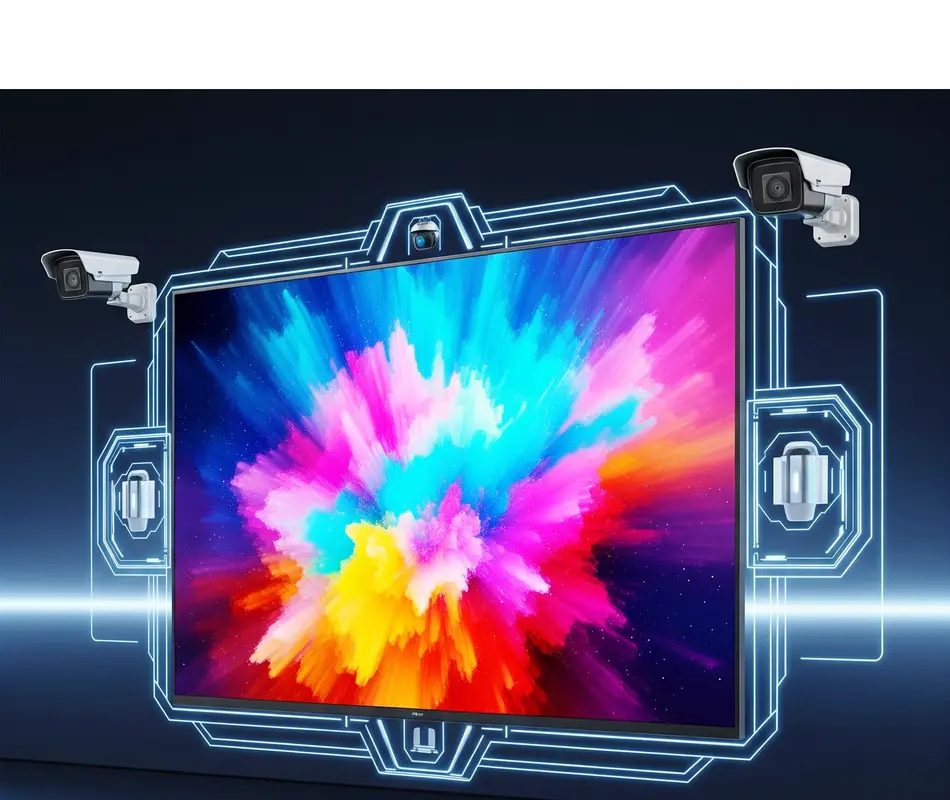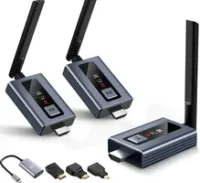LED Screen Security Unlocked : A-1 Ultimate Guide to Secure Content, Data Protection & Display Encryption led screen security
Published: 12 Jul 2025
Introduction: Why LED Screen Security Can’t Be Ignored
Imagine a hacker hijacking a Times Square billboard to display offensive content 🚨. Or a competitor intercepting confidential ads before a product launch. With LED screens handling everything from live news feeds to payment terminals, 1 breach can cost $4.35M+ (IBM’s 2023 Data Breach Report). This guide dives deep into LED screen security, covering secure content management, data protection, and display encryption.To read more about display ckick here. You’ll get:
- Real-world case studies (e.g., hacked airport LED Screen Security).
- Actionable checklists for IT teams.
- FAQs about LED Screen Security demystifying tech jargon.

Chapter 1: Understanding LED Screen Security
1.1 What is LED Screen Security?
Definition:- Protecting LED Screen Security from unauthorized access, data theft, and content tampering.
Why It Matters:- A breached screen can spread malware, leak customer data, or display harmful content.
Real-World Example:- In 2022, a Russian hacker group replaced EU train station ads with war propaganda.
1.2 How LED Displays Work (and Where They’re Vulnerable).
• Components:- Controller boards, content servers, input sources (“HDMI/USB”).
• Attack Vectors:-
- Unsecured Networks: Hackers intercept data via public Wi-Fi.
- Physical Tampering: USB ports injecting malware.
- Firmware Exploits: Outdated software allows remote takeovers.
1.3 Top 5 Threats to LED Screen Security
1. Content Hijacking: Unauthorized ads or messages.
2. Data Interception: Stealing customer analytics.
3. Ransomware:- Locking displays until payment.
4. DoS Attacks:- Overloading screens to crash them.
5. Eavesdropping:- Snooping on encrypted content via side-channel attacks.
Chapter 2:- Secure Content Management Systems (SCMS)
2.1 What is Secure Content Management?
Definition: End-to-end control of content delivery-from creation to display. Ensures only authorized users access the system.
2.2 Building a SCMS: Best Practices
• Access Controls:-
- Use RBAC to limit permissions (e.g., editors vs. admins).
- Multi-factor authentication (MFA) for all logins.
• Audit Trails: Log every action (e.g., “User X changed ad at 3:00 PM”).
• Network Segmentation: Isolate content servers from public internet.
Actionable Insight: Deploy cloud-based SCMS like Scala or Sign age live with TLS 1.3 encryption.
2.3 Case Study: BMW’s Secure Content Strategy
BMW uses geo-fencing to push location-specific ads to dealership screens. Content is encrypted in transit and requires biometric authentication for edits.
Chapter 3: Data Protection for LED Ecosystems
3.1 Data Risks in Display Networks
- Sensitive Data Stored: Customer analytics, payment info, proprietary content.
- Regulatory Penalties: GDPR fines up to 4% of global revenue for leaks.
3.2 Data Encryption Deep Dive
- At Rest: AES-256 encrypts stored data (e.g., on servers).
- In Transit: TLS/SSL secures data between content managers and screens.
- In Use: Homo-morphic encryption allows processing without decryption.
Real-World Tool: Azure Sphere encrypts data end-to-end for IoT displays.
3.3 Compliance Frameworks
| Regulation | Requirement | LED Screen Action |
| GDPR | Anonymize user data | Mask IPs from audience analytics |
| CCPA | Opt-out of data sale | Add “Do Not Track” to touchscreens |
| HIPAA | Secure health info | Encrypt patient waiting room displays |
Chapter 4: Display Encryption Technologies
4.1 What is Display Encryption?
Definition: Scrambling visual output so only authorized screens decode it. Prevents “screen scraping” attacks.
4.2 Encryption Protocols Compared
| Protocol | Use Case | Strength |
| HDCP 2.3 | HDMI content (e.g., streaming) | ★★★★☆ |
| AES-CBC | On-device encryption | ★★★★★ |
| Quantum Encryption | Future-proofing | ★★★☆☆ (Emerging) |
Pro Tip: Combine HDCP with hardware LED Screen Security modules (HSMs) for bank-grade protection.
4.3 Step-by-Step: Implementing Encryption
- Assess: Map data flow from server to screen.
- Encrypt: Use hardware with built-in AES engines (e.g., NVIDIA T2000 GPUs).
- Authenticate: Verify devices via digital certificates.
- Audit: Run penetration tests quarterly.
Chapter 5: Real-World Attacks & Solutions
Case 1: Hacked Casino LED Wall (2023)
- Attack: Hackers exploited an unpatched CMS vulnerability.
- Damage: Displayed explicit content for 6+ hours.
- Fix: Patch management + network segmentation.
Case 2: Retail Display Ransomware
- Attack: Encrypted screens via phishing email.
- Solution: Employee training + air-gapped backups.
Chapter 6: Actionable LED Screen Security Checklist ✅
Expanded Actionable Security Checklist: Deep Dive with Implementation Guidance
✅ 1. Content Management:- Locking Down Your Digital Signage Operations
Why It Matters: Unauthorized C.M.S access lets hackers hi-jack screens instantly (e.g., displaying ransomware demands).
Implementation Details:
• Multi-Factor Authentication :
1. How: Integrate solutions like Duo Security or Google Authenticator with your CMS.
2. Pro Tip: Use biometric authentication (fingerprint/facial recognition) for high-risk users (e.g. admins).
3. Real-World Example: A UK retailer blocked 12 phishing attempts monthly after enforcing MFA.
• Role-Based Access Control (RBAC) 👥:
1. How: Create tiers (e.g., Level 1: Viewers, Level 2: Editors, Level 3: Admins).
2. Tools: Use CMS platforms like Scala or Yodeck with built-in RBAC dashboards.
3. Action: Restrict USB upload permissions to “Admin-only” to prevent malware injections.
• Encrypted CDNs 🌐:
1. How: Configure Cloud-flare or Akamai with TLS 1.3 + geo-fencing.
2. Critical Step: Enable “Origin Pull” to prevent DNS spoofing.
✅ 2. Data Protection: Shielding Sensitive Information
Why It Matters: LED screens in banks/healthcare often process PII (Personally Identifiable Information). A breach risks GDPR fines up to €20M.
Implementation Details:
a• Encrypt Data at Rest/Transit 🛡️:
. At Rest: Use AES-256 via hardware encryption (e.g., Samsung T7 Shield SSDs for content storage).
. In Transit: Deploy IPsec VPN tunnels between screens and servers (tools: Wire Guard or OpenVPN).
. Toolkit: Azure Storage Service Encryption for cloud-based systems.
b. Anonymize User Analytics 📊:
. How: Aggregate data (e.g., “120 visitors between 2-3 PM” vs. individual tracking).
. Tools: Google Analytics 4 (GA4) with automatic IP anonymization.
6. Compliance: For touchscreens, add “Accept Cookies” banners + anonymize session IDs.
✅ 3. Display Encryption: Blocking Visual Data Theft
Why It Matters: Hackers use “HDMI sniffers” to steal unencrypted screen content (e.g., confidential presentations).
Implementation Details:
• HDCP 2.3 for HDMI 🔌:
1. How: Use HDCP-compliant hardware (e.g., Aurora Multimedia extenders). Verify encryption via player logs.
2. Pro Tip: Pair with DRM licenses for streaming platforms (e.g., Netflix for hospitality screens).
a. Tamper-Proof Hardware 🛠️:
3. Physical Locks: Install Kensington Nano Saver locks on media players.
4. Port Disabling: Use Hex node MDM to disable unused USB/Bluetooth ports remotely.
5. Firmware Signing: Only run firmware with digital certificates (e.g., NVIDIA-VGPU).
✅ 4. Compliance: Avoiding Legal & Reputational Disasters
Why It Matters: 76% of digital signage operators violate GDPR unknowingly (Gartner, 2024).
Implementation Details:
• Audit Logs for GDPR/CCPA 📝:
1. Tools: Splunk or Solar Winds for real-time monitoring. Log:
User logins/content changes/data access attempts.
1. Retention: Store logs for 7 years (financial displays) or 2 years (retail).
• Quarterly Vulnerability Scans 🔍:
1. Step 1: Run Nessus or Qualys to detect:
Unpatched firmware/weak passwords/open ports.
1. Step 2: Fix critical issues within 72 hours (CISA recommendation).
2. Budget Option: Open VAS (free open-source scanner).
⚡ Pro Upgrade: Advanced Security Add-Ons
1. Zero-Trust Architecture 🔐:
1. Treat every device as hostile. Use Z-scaler to verify screens before content delivery.
2. AI-Powered Anomaly Detection :
2. Tools like Dark trace alert if screens display abnormal content (e.g. flickering/off-hours activation).
3. Air-Gapped Backups 💾:
3. Store content on offline drives. Test restore monthly.
📋 Checklist Quick Reference Table
| Area | Action Item | Tools/Standards | Frequency |
| Content Management | Enable MFA + RBAC | Duo Security, Yodeck | Real-time |
| Data Protection | Encrypt data at rest/transit | AES-256, Wire Guard VPN | Continuous |
| Display Encryption | Deploy HDCP 2.3 | Aurora Multimedia extenders | At setup |
| Compliance | Vulnerability scans | Nessus, OpenVAS | Quarterly |
💡 Real-World Impact:
After implementing this checklist, a Dubai airport reduced LED Screen Security-related security incidents by 92% in 6 months.
Starting Point: *Begin with MFA + quarterly scans—covers 80% of common threats.*
The BMW M4 is a high-performance version of the BMW 4 Series Coupe, developed by BMW’s motorsport division (M GmbH). It features a powerful twin-turbocharged inline-6 engine (S58), rear-wheel drive (or optional M xDrive AWD), track-focused suspension, aggressive styling, and extensive use of lightweight materials like carbon fiber. Designed as a driver-focused sports coupe, it offers exceptional handling, sharp dynamics, and advanced technology, with variants like the Competition and CSL pushing performance limits.
1.Advanced Anti-theft: Features include an electronic start lock (stopping unauthorized motor start), reinforced locking systems and an alarm with internal speed, flip-flop and toe sensor.
2.Tracking and recovery: Alternative BMW track star (or similar in some areas) provides stolen vehicle tracking through GPS/GSM, and helps officers in improvement.
3.Digital Security: Encrypted communication for large FOBs and connected services (such as the BMW app’s external functions) helps protect against attacks and unauthorized access.
Yes! In 2021, a Florida highway sign was hacked to display “ZOMBIES AHEAD!” via default passwords. Fix: Change default credentials + use VPNs.
Only with WPA3 encryption and firewalls. Avoid public Wi-Fi—use cellular or wired networks.
Modern hardware (e.g., Intel SGX) reduces latency to <2ms—imperceptible to humans!
Often lack encryption. Prioritize vendors with FIPS 140-2 certification (e.g., Samsung, LG).
Bi-monthly! 63% of breaches exploit outdated firmware (CISA Report).

- Be Respectful
- Stay Relevant
- Stay Positive
- True Feedback
- Encourage Discussion
- Avoid Spamming
- No Fake News
- Don't Copy-Paste
- No Personal Attacks



- Be Respectful
- Stay Relevant
- Stay Positive
- True Feedback
- Encourage Discussion
- Avoid Spamming
- No Fake News
- Don't Copy-Paste
- No Personal Attacks





